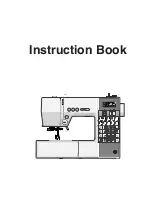
Page
48
SmartFOAM
WATERWAY CHECK VALVES
Check valves in the waterway, rated at 500 PSI
(34.5 BAR), are required to keep foam solution out of the
main pump and allow pump priming without drawing
foam into the piping.
Using double check valves, separated by at least 6” to 8”
(152 to 203 mm) of pipe before the foam injection point,
ensures that the pump and tank water remain uncontam-
inated.
FLOW SENSOR
The Hale SmartFOAM flow sensor is specially designed
to enable quick and easy sensor inspection and mainte-
nance. The flow sensor paddle wheel is installed on a
saddle clamp or weld fitting to the foam-capable dis-
charge piping of the apparatus.
In horizontal piping runs, the flow sensor is mounted
within the range shown in
Figure 29: Flow Sensor Tee Position Range
When selecting a flow sensor, it is important to consider
the minimum and maximum flow requirements during op-
eration. Refer to
Table 5: Pipe Size Versus Flow
, for the proper pipe size for flow range desired.
The flow sensor is installed in the piping before the foam
concentrate injection point.
This is true in applications where the foam system needs
to supply a 3” (76 mm) deck gun, as well as a 1”
(25.4 mm) booster line.
Table 7: Pipe Size versus Minimum Straight Run
Pipe Size
Minimum Recommended
Straight Run Pipe
1-1/2 in (38.1 mm)
9 in (228.6 mm)
2 in (50.8 mm)
12 in (304.8 mm)
2-1/2 in (63.5 mm)
15 in (381 mm)
3 in (76.2 mm)
18 in (457.2 mm)
4 in (101.6 mm)
24 in (609.6 mm)
Pipe size for flow sensor mounting must be selected to
provide accuracy at the lowest flow rate. Mounting the
flow sensor in a short section of pipe, one pipe size
smaller (e.g., 4” to 3”; 3” to 2-1/2”, etc.), provides better
accuracy at the lower flows.
Table 7: Pipe Size versus Minimum
” for pipe size. Selecting the next smaller
pipe permits reducing the straight pipe run the required
distance prior to the flow sensor paddle wheel.
In the short length of reduced pipe pressure loss is mini-
mal and there is minimal pressure loss through elbows
and fittings (
).
Excessive turbulence in the flow sensor may produce
unstable and inaccurate flow readings. The length of
straight pipe prior to the flow sensor must be sufficient to
reduce any turbulence in the pipe.
The following guidelines help attain the best readings,
and maintain Hale SmartFOAM system accuracy.
1. A minimum of
6 times the pipe diameter
of
straight run pipe without any fittings is necessary
prior to the flow sensor paddle wheel (
2. The downstream piping length is not as critical,
but there must be a short length of straight pipe
with no fittings or valves immediately after the
flow sensor paddlewheel. Two to three times the
pipe diameter is recommended.
3. Do not mount a flow sensor directly after an el-
bow or valve. Valves create severe turbulence
when they are “Gated”.
Summary of Contents for SmartFOAM
Page 3: ...Page 2 SmartFOAM NOTES...
Page 16: ...Page 15 SmartFOAM SYSTEM DIAGRAM Figure 6 Typical Hale SmartFOAM 2 1A and 1 7AHP System...
Page 17: ...Page 16 SmartFOAM Figure 7 SmartFOAM 3 3 5 0 6 5 Single Tank System with In line Strainer...
Page 18: ...Page 17 SmartFOAM Figure 8 SmartFOAM 3 3 5 0 6 5 Single Tank withMSTandIn lineStrainer...
Page 19: ...Page 18 SmartFOAM Figure 9 SmartFOAM 3 3 5 0 6 5 Single Tank withMSTandFSSeriesStrainer...
Page 20: ...Page 19 SmartFOAM Figure 10 SmartFOAM 3 3 5 0 6 5 Dual Tank withMDTIIandIn lineStrainers...
Page 21: ...Page 20 SmartFOAM Figure 11 SmartFOAM 3 3 5 0 6 5 Dual Tank withMDTIIandFSSeriesStrainer...
Page 22: ...Page 21 SmartFOAM Figure 12 SmartFOAM 3 3 5 0 6 5 Dual Tank withADTandIn lineStrainers...
Page 23: ...Page 22 SmartFOAM Figure 13 SmartFOAM 3 3 5 0 6 5 Dual Tank withADTandFSSeries Strainers...
Page 48: ...Page 47 SmartFOAM Figure 28 Typical 4 Inch Check Valve Installation Midship Pump...
Page 59: ...Page 58 SmartFOAM Figure 43 ADT Option Air Hose Connections Part 2...
Page 68: ...Page 67 SmartFOAM Figure 55 Top Mount Low Level Sensor Assembly...
Page 77: ...Page 76 SmartFOAM NOTES...
Page 90: ...89 Page 89 SmartFOAM NOTES...
















































